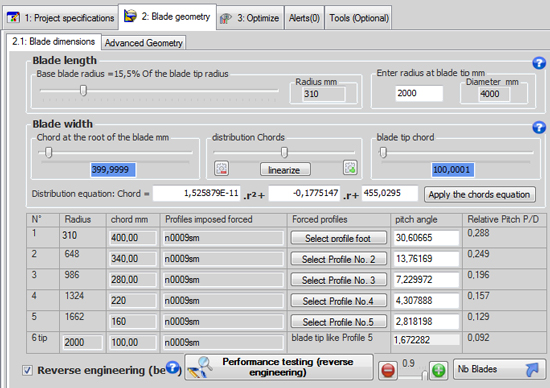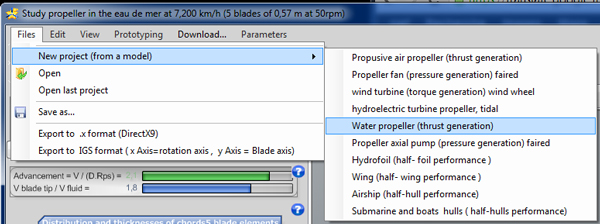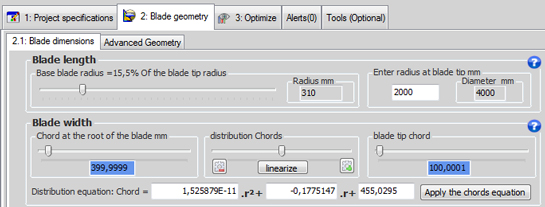propeller turbine design 3D. heliciel software:
discover heliciel software and Mecaflux suite softwares
Performance and modeling of an existing propeller: Reverse engineering
Understand and master the reverse engineering of an existing propeller with Heliciel software:
Héliciel has several design methods adapted to different case of propellers studies:
- The user default design, to create an optimum propeller, by entering the fluid speed.. The rotation speed can then be imposed or calculated. The construction of the propeller blade at "optimum twist"
 is then made, by adjusting the twist to provide the maximum profile lift/drag ratio, taking into account the calculated induced velocities.
is then made, by adjusting the twist to provide the maximum profile lift/drag ratio, taking into account the calculated induced velocities. - A calculation of performance "offdesign""
 is then available to evaluate the performance of the propeller when it operates outside its operating point design ....Design phases are then defined by the specifications of the propeller.. For more on the design phase of the optimized propeller for a given operating point.
is then available to evaluate the performance of the propeller when it operates outside its operating point design ....Design phases are then defined by the specifications of the propeller.. For more on the design phase of the optimized propeller for a given operating point. - Heliciel also offers a way "reverse design" which is actually a performance calculation "off design", but for modeling and quickly calculate the performance of an existing propeller.

Example of use of reverse engineering methodTo begin we will select a default project that best fits our project for this example, we will take a boat propulsion propeller:


In the Geometry tab we select the "Reverse Engineering" mode:

As for the other way of design, the dimensions of the chords and the length of the blade are controlled in the upper part of the blade dimensions tab. Enter the radius blade tip found on the propeller, and adjust the slider to the radius at the blade root.Then adjust the chords at tip and blade root, and use the cursor "distribution chords" and buttons to adjust the intermediate chords in order to correspond (at best) to your existing propeller.





 Global site map
Global site map Mecaflux
Mecaflux Tutorials Mecaflux Pro3D
Tutorials Mecaflux Pro3D Tutorials Heliciel
Tutorials Heliciel Mecaflux Store
Mecaflux Store Compare software functions
Compare software functions Quotes, Orders, Payment Methods
Quotes, Orders, Payment Methods project technical studies
project technical studies